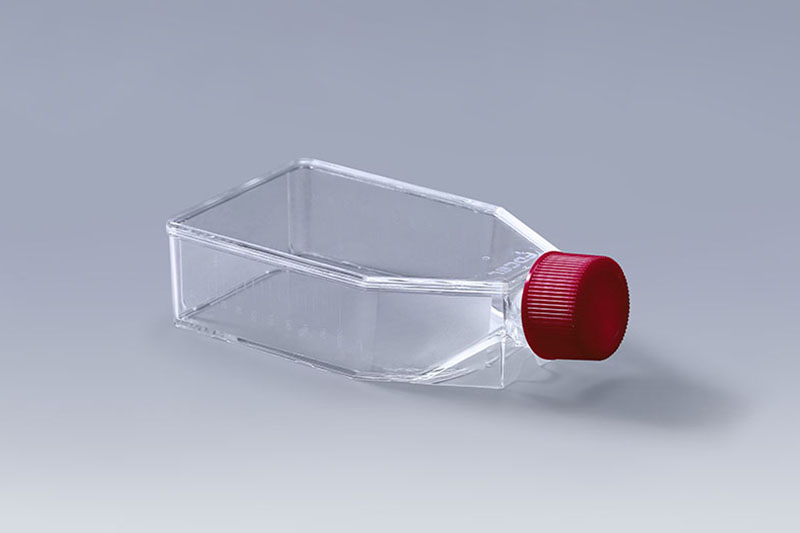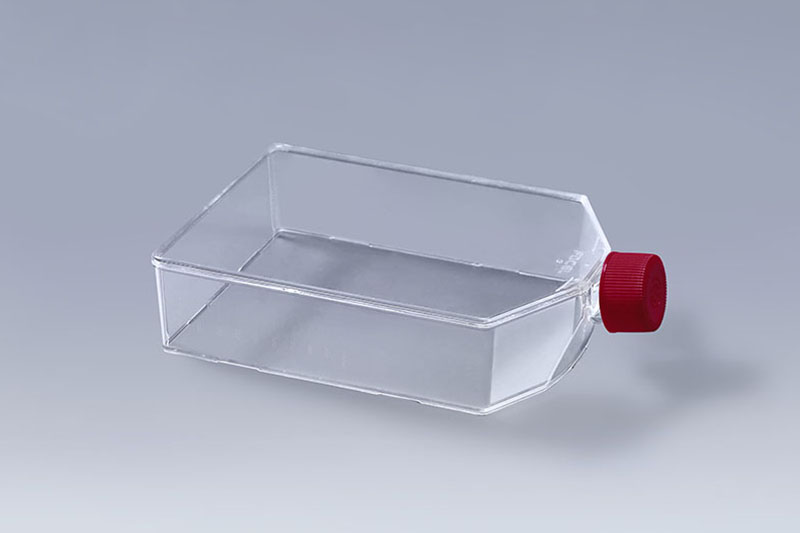The previous article introduced four of the common pollution types when using cell culture consumables such as cell culture flasks for cell culture. Next, I will introduce the remaining three pollution types and their characteristics:
5. Protozoan pollution: The culture medium may be slightly turbid, and the number of tiny dots under the microscope is very large and slightly mobile. Although the cells can grow, the reproduction speed is obviously slowed down, and the cell state is not good, the edges are not clear, and the cells are not clear. Translucent. They can symbiosis with cells but will compete with cells for nutrients. This symbiosis is very common, but their number is small, and the cell site has an advantage, so it will not affect the normal growth of cells, only when they reach a certain number It will affect the growth of cells and eventually form a vicious circle.
T75 Cell Culture Flasks
6. Virus contamination: In the process of tissue cell culture, if the potential virus is not removed, virus contamination will occur. At present, no less than 20 kinds of serum viruses have been found in the culture of primary monkey kidney cells. Although virus contamination Cells do not affect the primary culture, but the production of vaccines is not safe. Therefore, latent viruses are a difficult problem in the mass production of cells and the production of biological products such as vaccines and interferons.
T225 Cell Culture Flasks
7. Contamination of non-same cells: that is, cross-contamination of cells. Since the equipment and solutions required for each cell line are not strictly separated during cell culture operations, one type of cell is often contaminated by another cell. At present, there are Dozens of cells are polluted by HeLa cells, which makes many experiments invalid. Pollution of chemical components caused by non-cell cultures also occasionally occurs, mostly due to incomplete cleaning and disinfection of the items required for cell culture. Caused by toxic chemicals.
The above is an introduction to the remaining three common types of pollution when using cell consumables such as cell culture flasks for cell culture. I hope it can help you. If you have any questions, please consult.
The FAI climbed 5.9 percent year-on-year in the first 11 months of 2018, quickening from the 5.7-percent growth in Jan-Oct, the National Bureau of Statistics (NBS) said Friday in an online statement.
The key indicator of investment, dubbed a major growth driver, hit the bottom in August and has since started to rebound steadily.
In the face of emerging economic challenges home and abroad, China has stepped up efforts to stabilize investment, in particular rolling out measures to motivate private investors and channel funds into infrastructure.
Friday's data showed private investment, accounting for more than 60 percent of the total FAI, expanded by a brisk 8.7 percent.
NBS spokesperson Mao Shengyong said funds into weak economic links registered rapid increases as investment in environmental protection and agriculture jumped 42 percent and 12.5 percent respectively, much faster than the average.
In breakdown, investment in high-tech and equipment manufacturing remained vigorous with 16.1-percent and 11.6-percent increases respectively in the first 11 months. Infrastructure investment gained 3.7 percent, staying flat. Investment in property development rose 9.7 percent, also unchanged.
 English
English




















































